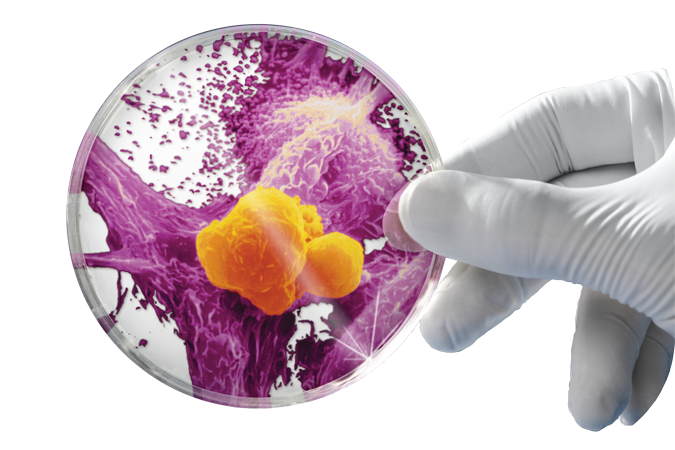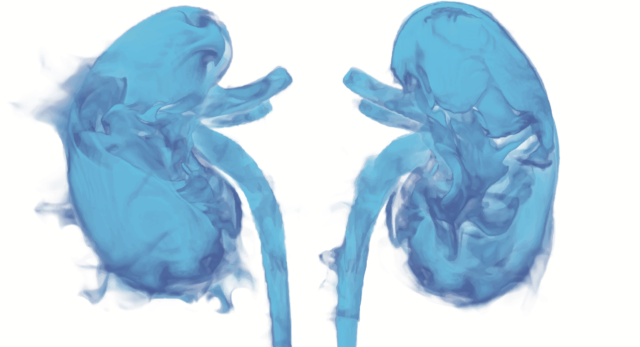In 2021, it is estimated that over 1.9 million Americans will be diagnosed with a form of cancer and another 608,570 will have a fatal outcome. Surgery is a favored treatment for many cancers when diagnosed early enough, however, sometimes surgery is not an option. The reason for this may be the delicate location of the cancer such as the liver, or the danger of the cancer spreading after surgery. In addition, many cancers become resistant to treatments like chemotherapy and radiation.
When this happens, patients are often left with a terminal diagnosis.
New Non-Invasive Therapy Offers Hope
Recently, patients have found hope, by literally freezing tumors in their tracks with cryoablation therapy!
Cryoablation uses cryogenic temperatures (-200 degrees) to freeze and kill tumors in a noninvasive procedure. The cryogenic temperature damages cells by freezing them from the inside out, preventing them from spreading throughout the body.
In contrast to heat-based therapies, cryoablation causes cell death through osmosis and necrosis. It is the necrosis that seems to be yielding promising results.
Cancers often grow and spread because they avoid detection by the immune system. Cryoablation kills the cancer cells but largely leaves their intracellular components intact, giving the patient’s body an opportunity to recognize the cancer and create a lasting immune response.
This immunological reaction, in theory, may also damage cancer cells outside the ablated area, resulting in what’s known as the abscopal effect.
So far, this technique has been proven effective for many different types of cancers, including melanoma, lung cancer, breast cancer and prostate cancer.
But It Is Not New?

The practice of applying cold to wounds dates to 3,000 B.C. The English physician James Arnott attempted the use of chilly temperatures to treat cancer for the first time in the 19th century.
Initially Arnott successfully utilized cold temperatures, such as salt and ice solutions, to produce localized numbness instead of using chloroform inhalation during surgical operations. He stated that the freezing temperatures not only acted as an anesthetic, but they also decreased cancer cell viability, resulting in greater patient survival. This is what prompted him to start cryoablation as a viable therapeutic alternative for local tumors.
FDA Approved
Cryoablation is an FDA-approved therapy for certain solid tumors with a diameter of 2 centimeters or less. It is not uncommon among oncologists to utilize cryoablation as a treatment for several types of solid cancers. Sadly it is not well known in the United States.
How Exactly Does Cryoablation Work?

During the cryoablation, a thin needle is inserted directly into the cancerous tumor, then a liquefied gas, such as nitrogen or argon, passes through cryoprobes and expands into a gaseous form until extreme freezing temperatures of around -202 degrees are achieved. Cancer cell lethality is achieved at temperatures under -104. The freezing procedure is followed by a thawing phase and then repeated again and again to achieve tumor cell death.
Cryoablation Might Help Other Therapies
It seems that cryoablation may be synergistic with other therapies because of the mechanism of cell death induction. After the procedure, the husk of the tumor remains and even though it does not grow; it emits a range of molecules that attract the immune system.
What happens next is the triggering of a tumor-specific immune response, prompting the body to attack the cancer.
This is especially beneficial for immunotherapy where the goal is to train the body’s immune system to recognize cancer cells. The problem with immunotherapy alone is that only a small percentage of patients respond.
Is Cryoablation Triggering Something Else?

What makes cryoablation even more interesting is that it may be creating something called the abscopal effect.
The abscopal effect is the reduction or disappearance of tumors in regions of the body that were not the target of local therapy, such as radiation therapy. And in this case, cryoablation.
It’s thought that due to the local therapy, the immune system is activated to fight cancer throughout the entire body, resulting in an abscopal effect.
This is key to achieving long term remissions.
What Does This Mean For The Future Of Cancer Treatment?

Cryoablation + Immunotherapy is a very exciting possibility for millions of cancer patients throughout the world. Unfortunately combining the two is only practiced at a few cutting edge research facilities around the world. For American patients, however, the good news is that one such facility is located 10 minutes south of the San Diego border, CHIPSA Hospital
CHIPSA has over 40 years of experience in combining the latest advanced medicine for their patients and using cryoablation + immunotherapy is no different.
Editors Note: At the time of this article, it is our understanding that Chipsa Hospital has recently acquired a cryoablation machine from Israel
To learn more about Chipsa Hospital please click the link below: www.chipsahospital.org


























